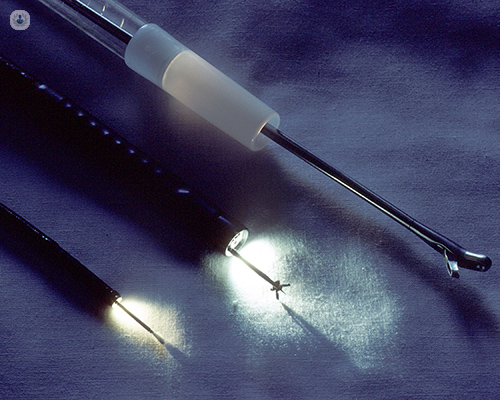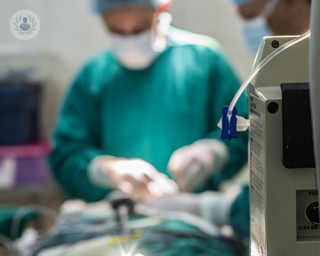Endoscopic ultrasound (EUS)
Dr Mark Austin - Gastroenterology
Created on: 12-05-2017
Updated on: 06-12-2023
Edited by: Conor Lynch
What is an endoscopic ultrasound (USE?)
An endoscopic ultrasound is a procedure that combines endoscopy and ultrasound to allow a specialist to view the interior walls of various organs and their structures (such as the oesophagus, stomach, intestines), as well as obtain tissue samples and repair any lesions found.

Why is it done?
Endoscopic ultrasound helps your doctor to diagnose or treat various conditions, such as tiny gallstones and upper abdominal pain. Furthermore, your doctor can, for example, take a biopsy of tumours or cysts in the pancreas or assess lymph nodes in your chest or stomach.
Generally, endoscopic ultrasounds are used to:
- Investigate the gallbladder or bile ducts
- Identify the nature or stage of a condition
- Look for causes of stomach pain, which may not be able to be picked up on alternative imaging
- Evaluate enlarged lymph nodes
- Assess cancer in the pancreas, oesophagus, and stomach
What will happen before my endoscopic ultrasound?
Before performing this test, your doctor will tell you how to prepare for it as it all depends on the organ they are going to examine. In most cases, your doctor will ask you not to eat or drink at least six hours before the procedure. You should always inform your doctor about the medication you are taking as well. Usually, they will ask you to stop taking any blood-thinning medication.
How is an endoscopic ultrasound performed?
The procedure is performed by introducing an endoscope (thin, flexible tube with a small attached camera) through the mouth or anus and is guided to the area of interest. Endoscopic ultrasound usually takes between 15 and 45 minutes, during which the doctor can carry out what is required, such as obtaining samples for analysis or repairing possible injuries.
The images from an endoscopic ultrasound are usually more accurate and detailed than what is produced by traditional ultrasound or other types of scans.
What is recovery from an endoscopic ultrasound like?
You will go to recover after the procedure has ended, where you will stay an hour or two before being discharged home. You may feel slightly lightheaded due to the sedative so you will need to be accompanied home. The results depend on the complexity of your case but are typically ready a few days later.








